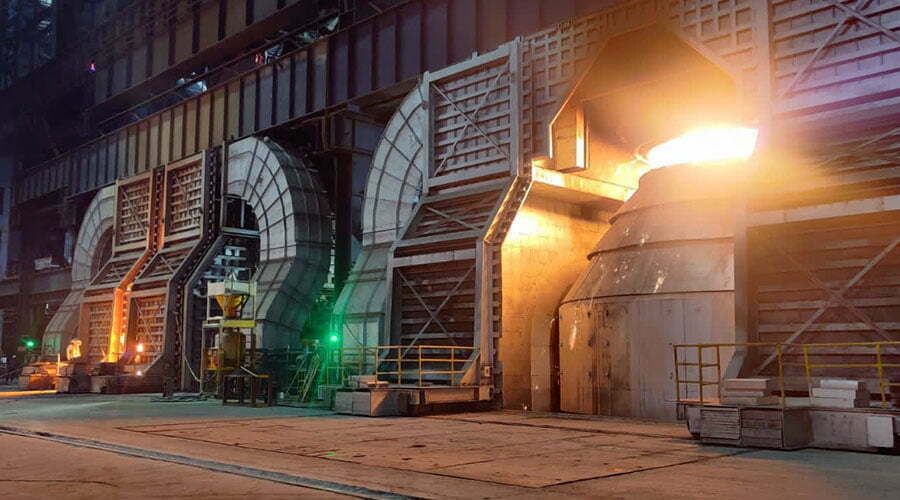There are great differences between Electric Arc Furnaces Steelmaking and converter steelmaking in raw materials, furnace temperature, smelting cycle, single furnace scale, etc.
1. Electric Arc Furnaces Steelmaking
Advantages of Electric Arc Furnace Steelmaking
Secondary utilization of scrap alloy elements, arc high temperature can melt refractory alloy elements, and can accurately control the furnace’s Internal temperature.
According to the above, scrap steel is the main raw material of electric arc furnaces, so the alloy elements in scrap steel can be reused in electric arc furnaces steelmaking;
The electric arc furnace uses the heat generated by the electric arc between the graphite electrode and the iron to smelt iron. The temperature of the electric arc zone is above 3000 ℃, which makes the electric arc furnace able to smelt refractory alloy elements;
At the same time, the temperature in the furnace is controlled by accurately adjusting the current. The electric arc furnace can accurately control the molten steel temperature for a long time;
The arc furnace process is flexible and can meet the requirements of smelting small batches / multi-variety special steel.
Disadvantages of Electric Arc Furnaces Steelmaking
The quality of molten steel is greatly affected by scrap steel, the smelting cycle is long, and the power consumption is large.
According to the above, electric arc furnaces take scrap steel as the main raw material. During the smelting process, more impurities may be introduced into the molten steel, resulting in low-quality molten steel; According to our in-depth report on the carbon industry: carbon for iron and steel (I) – new electric furnace launch drives graphite electrode demand, and technological progress and concentration improvement help long-term development, which was released on June 25, 2017, the average tapping time of the fourth generation electric furnace, which is widely used at present, is 55~60 minutes, and the smelting cycle is longer than that of converter steelmaking; The power consumption is 500kwh/t, posing great pressure on the power supply pressure of the local power grid.
2. Converter
Advantages
High purity of molten steel, short smelting cycle, and low power consumption.
According to the above, the converter takes the molten iron produced by the blast furnace as the main raw material, so the purity of the molten steel for converter steelmaking is high and the impurity alloy elements are less; The converter steelmaking process completely relies on the chemical heat and physical heat brought by hot metal oxidation, without external energy input, so the power consumption is low;
The smelting cycle is 20~30 minutes, which is shorter than that of electric arc furnaces steelmaking, and the production rhythm is faster.
Disadvantages
The low furnace temperature is not suitable for melting refractory alloy elements, large furnace capacity and poor process flexibility.
Because the converter steelmaking process completely depends on the chemical heat and physical heat brought by hot metal oxidation, and there is no external energy input, the converter temperature is usually below 2000 ℃, which is not suitable for smelting refractory alloy elements;
The capacity of the large-scale converter can usually reach more than 200 tons, and the capacity of No. 1 and No. 2 converter in Zhanjiang iron and steel base of Baosteel is 350 tons, which is the largest converter in China at present.
However, the large capacity also leads to the large scale of molten steel in a single converter and poor smelting flexibility, which is not suitable for smelting small quantities and multiple varieties of steel.

